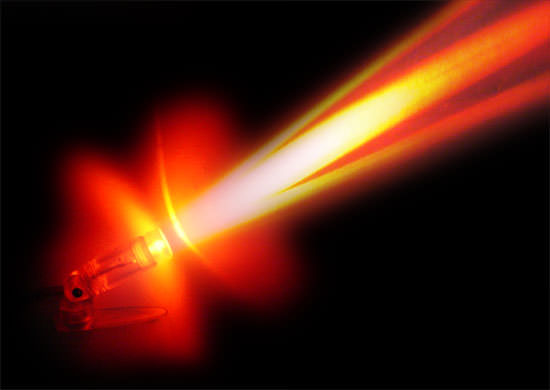The EU’s Extreme Light Infrastructure (ELI) project will be developed in the Czech Republic with findings likely to help high-tech industry.
The website CzechPosition reports that the European Commission gave the green light for the plans of three lasers. The three superlasers will be completed by 2015, and will be the first lasers to operate on the exawatt scale - 1000000000000000000 watts!
Besides, a fourth superlaser is said to be forthcoming, with beams twice the power of the aforementioned three. The implications of this technology will reach into the disposal of nuclear waste and cancer diagnosis and treatment, and furthering man's insights into nanoscience and chemical molecular research.
The three lasers will be built in the Czech Republic, Hungary, and Romania, and will each fire pulses that reach the equivalent of the total power received by the earth from the sun.
http://en.wikipedia.org/wiki/Orders_of_magnitude_%28power%29
The pulses only last 1.5 x 10-14 seconds. But during that instant, the Extreme Light Infrastructure pulses will deliver 20 times the power of the laser pulses at the National Ignition Facility in California, which last 2.0 x 10-8 seconds.
Each laser costs approx. US$400 million.
If all goes well, the construction of the fourth laser will be approved, which contains 10 lasers, and each of them having twice the power of the superlasers.The director of the Institute for Extreme Light in France, hopes that system could eventually reach intensities that might be able to make "virtual" particles real.
As New Scientists report:
http://www.newscientist.com/article/dn19327-lasers-could-make-virtual-particles-real.html
If this goes on, we might finally have the ability to build our own Death Star.
Read more:
http://www.popsci.com/technology/article/2011-04/eli-project-will-build-worlds-most-poweful-lasers
http://www.ceskapozice.cz/en/print/news/society/world%E2%80%99s-most-powerful-laser-be-developed-near-prague
The website CzechPosition reports that the European Commission gave the green light for the plans of three lasers. The three superlasers will be completed by 2015, and will be the first lasers to operate on the exawatt scale - 1000000000000000000 watts!
Besides, a fourth superlaser is said to be forthcoming, with beams twice the power of the aforementioned three. The implications of this technology will reach into the disposal of nuclear waste and cancer diagnosis and treatment, and furthering man's insights into nanoscience and chemical molecular research.
The three lasers will be built in the Czech Republic, Hungary, and Romania, and will each fire pulses that reach the equivalent of the total power received by the earth from the sun.
http://en.wikipedia.org/wiki/Orders_of_magnitude_%28power%29
The pulses only last 1.5 x 10-14 seconds. But during that instant, the Extreme Light Infrastructure pulses will deliver 20 times the power of the laser pulses at the National Ignition Facility in California, which last 2.0 x 10-8 seconds.
Each laser costs approx. US$400 million.
If all goes well, the construction of the fourth laser will be approved, which contains 10 lasers, and each of them having twice the power of the superlasers.The director of the Institute for Extreme Light in France, hopes that system could eventually reach intensities that might be able to make "virtual" particles real.
As New Scientists report:
The uncertainty principle of quantum mechanics implies that space can never be truly empty. Instead, random fluctuations give birth to a seething cauldron of particles, such as electrons, and their antimatter counterparts, called positrons.Source:
These so-called "virtual particles" normally annihilate one another too quickly for us to notice them. But physicists predicted in the 1930s that a very strong electric field would transform virtual particles into real ones that we can observe. The field pushes them in opposite directions because they have opposite electric charges, separating them so that they cannot destroy one another. Lasers are ideally suited to this task because their light boasts strong electric fields.
http://www.newscientist.com/article/dn19327-lasers-could-make-virtual-particles-real.html
If this goes on, we might finally have the ability to build our own Death Star.
Read more:
http://www.popsci.com/technology/article/2011-04/eli-project-will-build-worlds-most-poweful-lasers
http://www.ceskapozice.cz/en/print/news/society/world%E2%80%99s-most-powerful-laser-be-developed-near-prague





